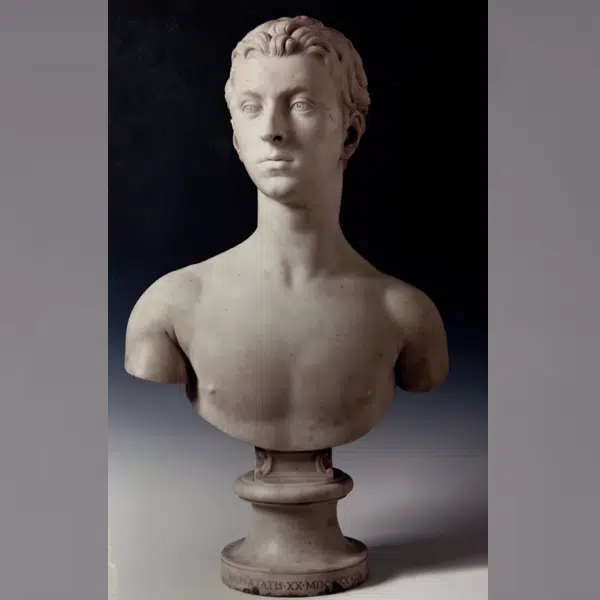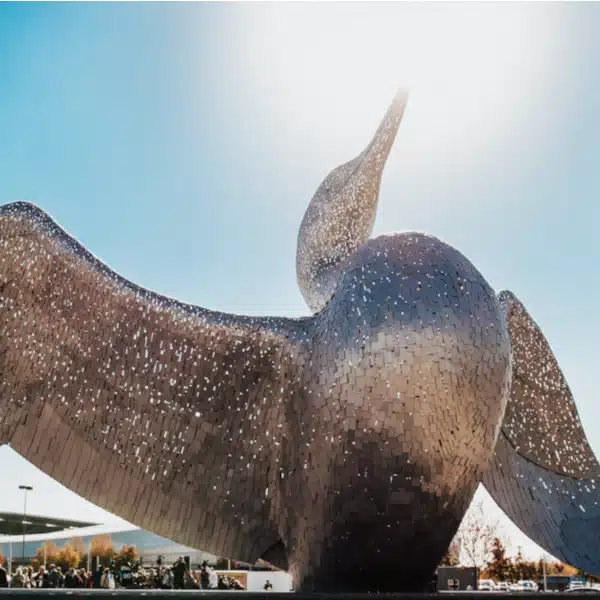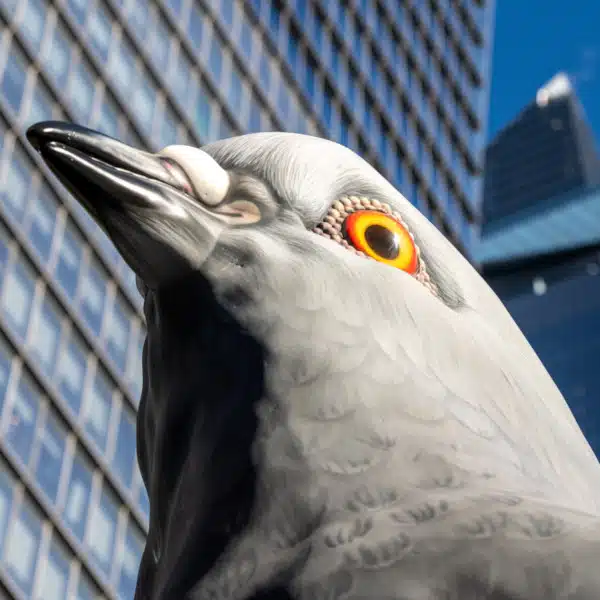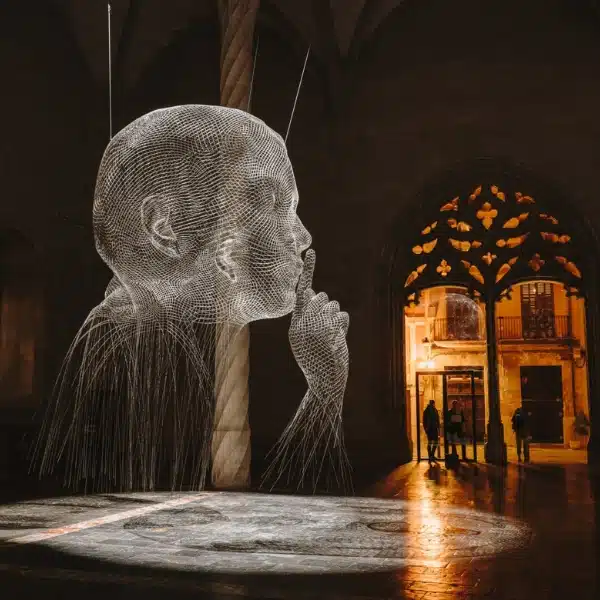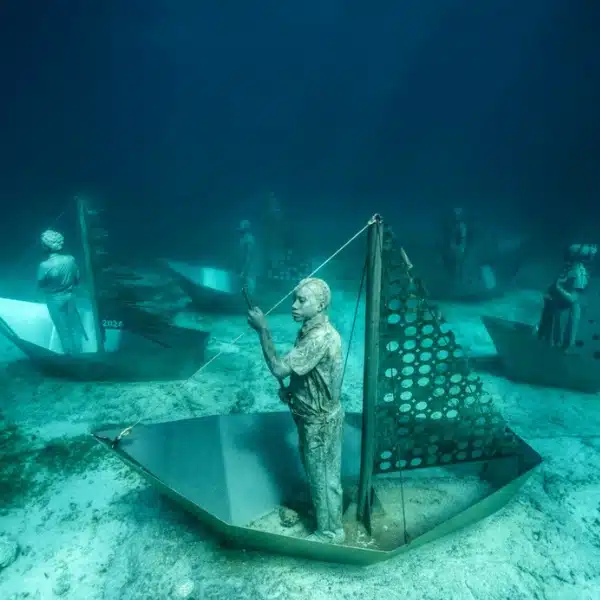
Mountains: Mirror
Sculptor Eduard Locota creates striking landscapes by transforming acrylic material into glistening bodies of water. Working for weeks to achieve a shiny, reflective surface, he transforms the common material into something that’s spectacular and truly one of a kind. The pieces, which often incorporate additional materials like marble, take the form of monolithic blocks and tables. They resemble tranquil lakes, breathtaking mountain ranges, and the dusty sand dunes in the desert.
Locota's works serve as homages to the natural beauty of the landscapes that they replicate, but he doesn't stop at simply capturing likenesses. With each piece he sculpts, he adds an enchanting surrealist twist. Mountains: Mirrors is the best example of this. The block sculpture is more than a single mountain range—it is a parallel image of one. In a symbolic act, the top and bottom of the form are exactly the same. “This artwork is an augmented mirror reflection of the mountain,” Locota explains, “as you would see in a lake, in a dream.”
We were honored to speak to Locota about his beguiling acrylic sculpture. Scroll down for our exclusive interview.
Eduard Locota creates enchanting landscape sculpture with a surrealist twist. Scroll down to learn more about his work.
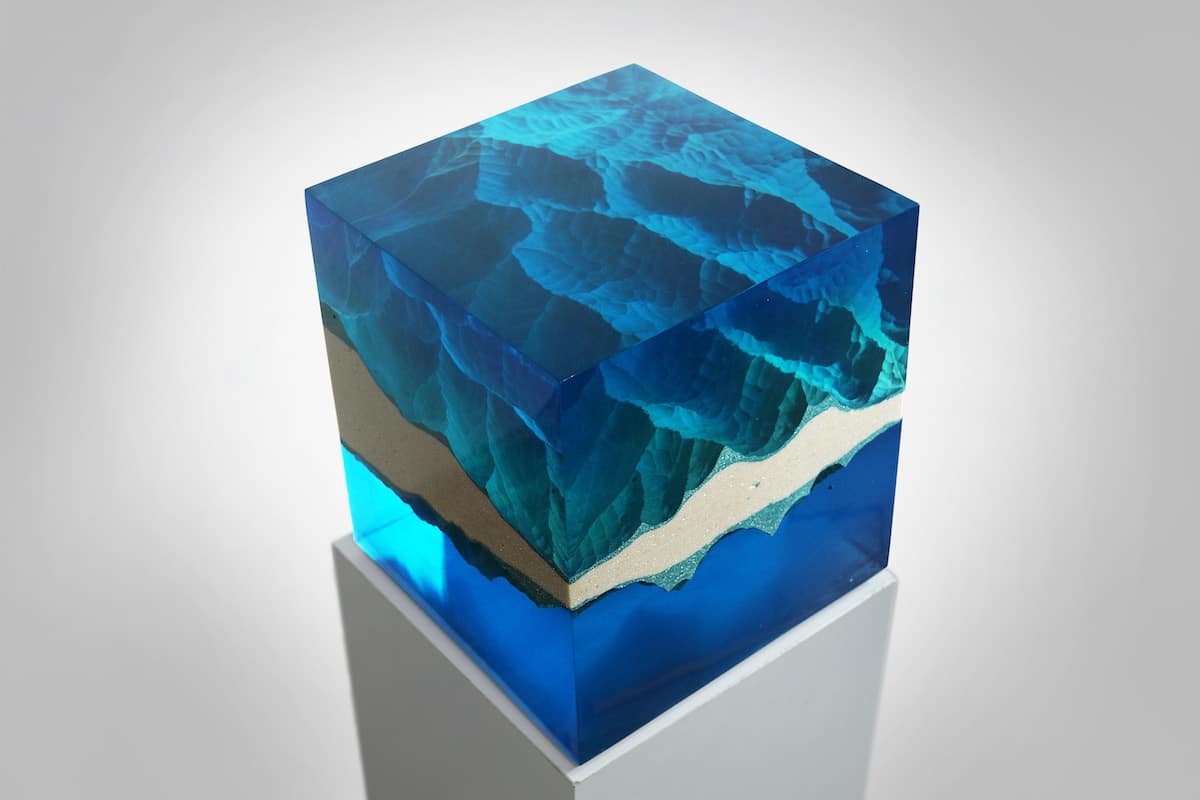
Mountains: Mirror
What is your artistic background?
I have started my artistic career as a designer, working primary in 2D & 3D graphic software, as thousands of other guys. After a few years behind the monitor, my passion for the 3D environment has strongly evolved beyond the boundaries of the virtual. I have broken the chains and once again took the academic road and earned a degree in arts/sculpture.
Where did you learn the techniques you use in your work today?
The reality with arts is that nobody can truly teach you how to create art. It is a long solitary and creative process of innovating, experimentation and having a strong appeal for risk-taking. I love experimenting, but it can be an expensive “game” given the high price of the materials, and of the long months consumed for achieving the results sought. I regard my studio to be similar to a research laboratory; that give birth to wild and beautiful experiments that art collector and enthusiasts seem to really appreciate. Though difficult, I really try to stay outside of the artistic scene, focusing on my laboratory to create my transparent Frankenstein.
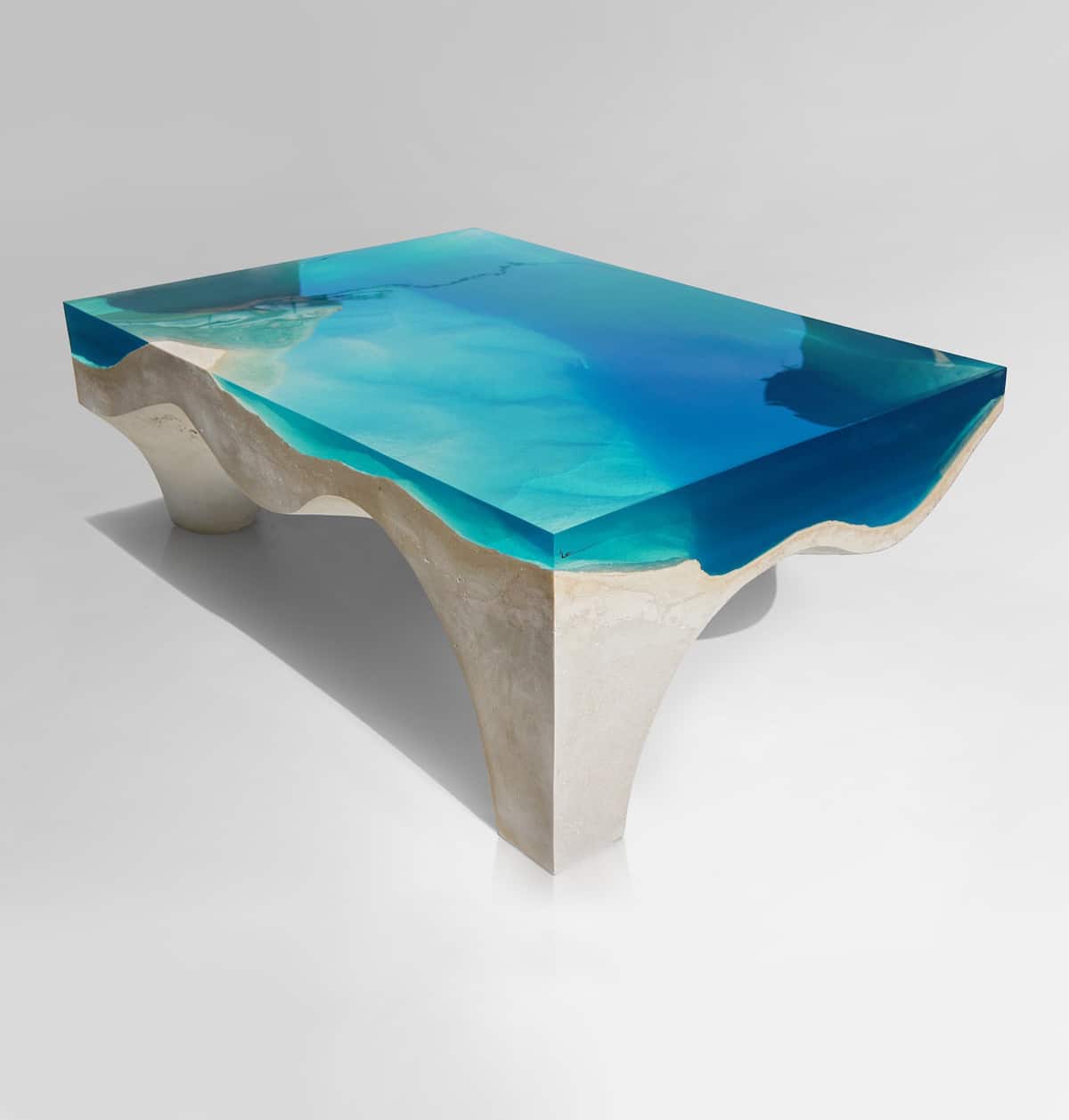
Crete Table
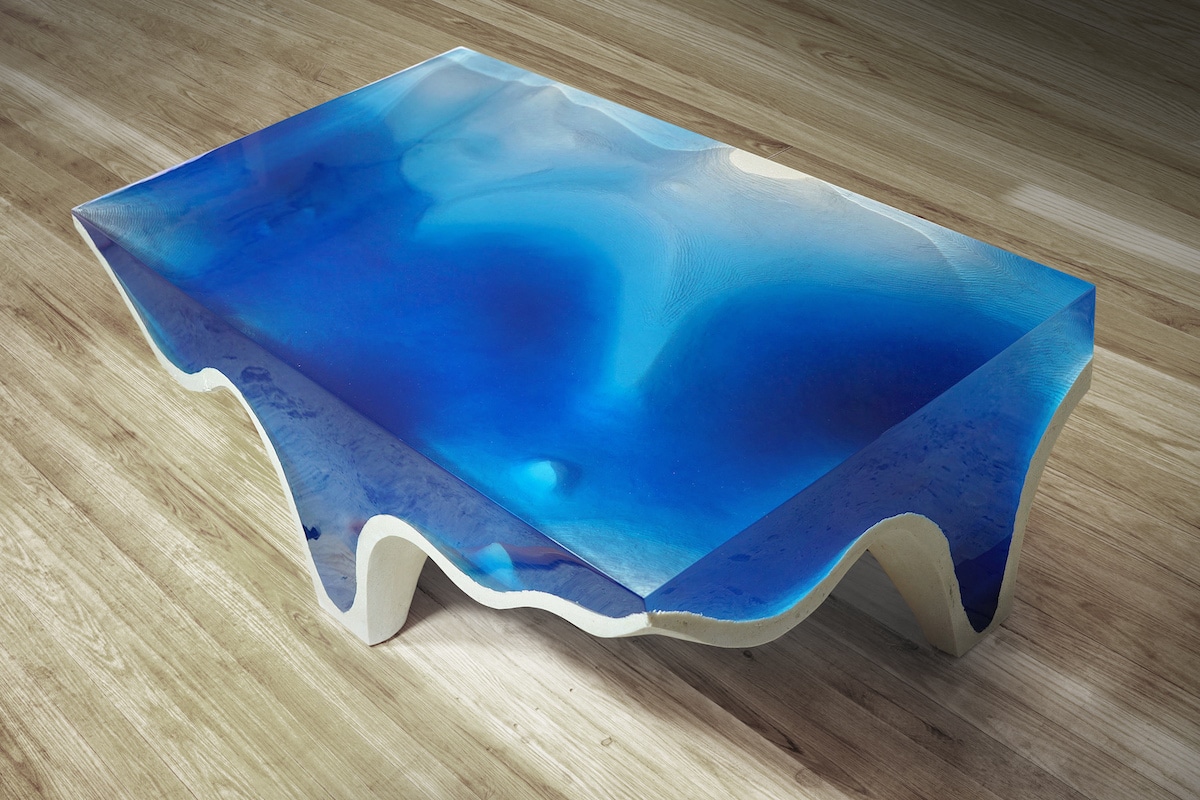
Crete Table
Your work is evocative of natural landscapes, and you also speak a lot about your process and materials. Of the two, what has informed your sculptures the most?
I strive to achieve powerful retinal artworks [that are] visually reductive that rather imply than resemble the subjects in the artwork.
Materials help me deliver that message, but they are not the key player. Interesting visual effects can be achieved with many other materials, the ones used are just a personal preference for the time being.
The poetry behind my suggested landscapes is spoken with a vocabulary of very clear shapes, which go beyond minimalism and abstraction. I would always choose the theme over the material.
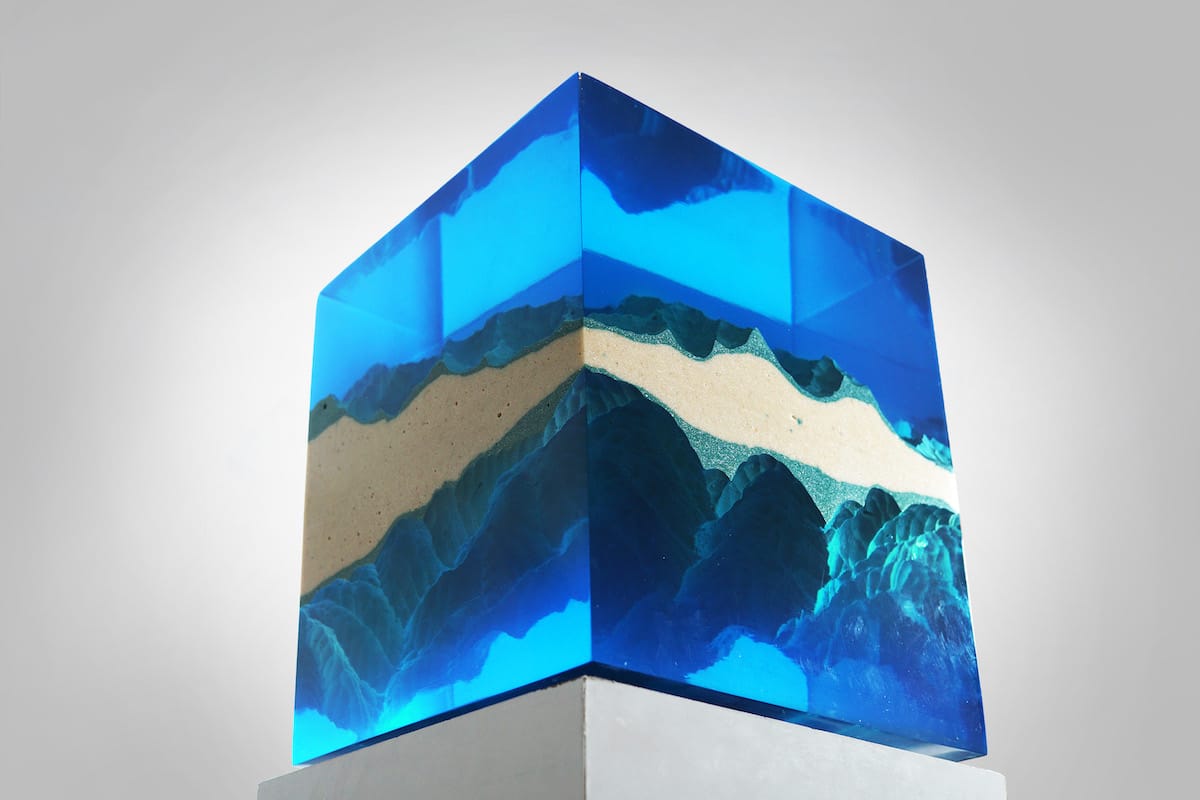
Mountains: Mirror
One of your most striking pieces is Mountains: Mirrors. What was the inspiration for this piece, and how did you go about fabricating it?
Mountains: Mirror is one of my favorite pieces. In Romania, we still have an undamaged and wild nature, and I often go trekking in the outdoors. The forest and mountains always provide a fabulous sensation of timelessness and freedom.
Nature is my mentor and main inspiration. It is such a formidable teacher if we take the time to observe it deeply.
Was this piece created how you imagined?
To give you a glimpse inside my vision, Mirror: Mountain is an isometric artwork, a section of a landscape. It visually represents the image of a mountain peak that is a reflection into a glacier lake but with a surreal splash. Though my words may not always be as concise, I like to think my visual language is.
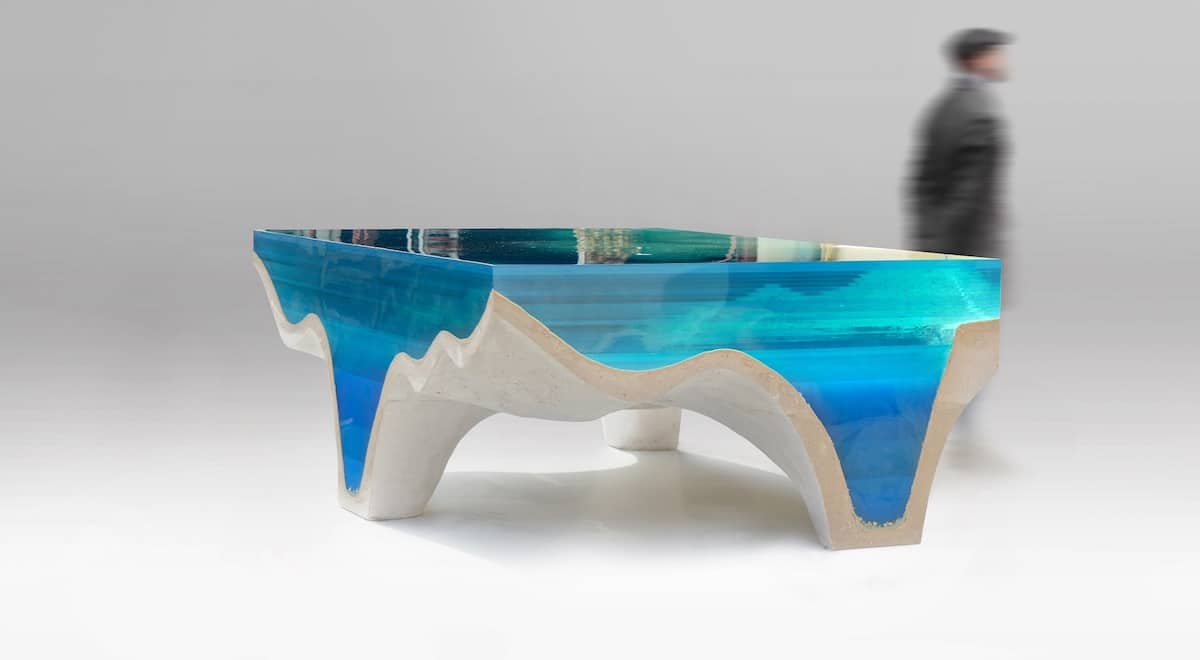
Crete Table
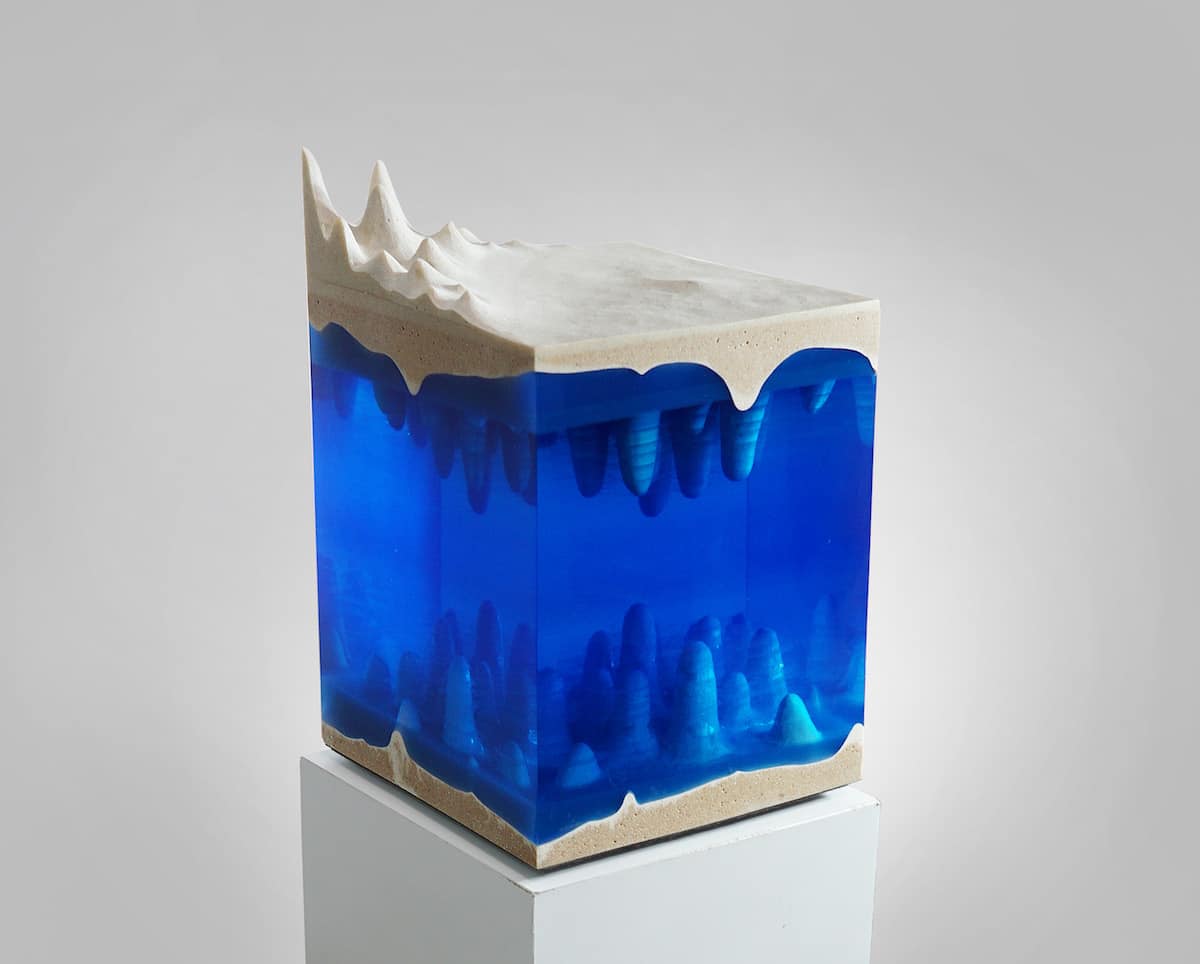
Caverna
What is it like to work with acrylic? How do you get it to glisten like water?
Acrylic is not an ideal material to work with. It is unpredictable, messy, and is also releasing toxins on the short curing process. But it does offer significant visual advantages over glass, stone or wood.
The curing process of the acrylic is highly unstable and takes time. It is not uncommon that just the casting process of one single large artwork, to take weeks. The result of the cured piece is a large brute block of translucent acrylic that needs long weeks of grinding, sanding and finally polishing to a clear finish. Only after the acrylic has gone through deep polishing, we can achieve this spectacular visual transparency and shine.
Except for the deep polishing procedure, the sculptural process is similar to sculpting soft
stone, like marble.
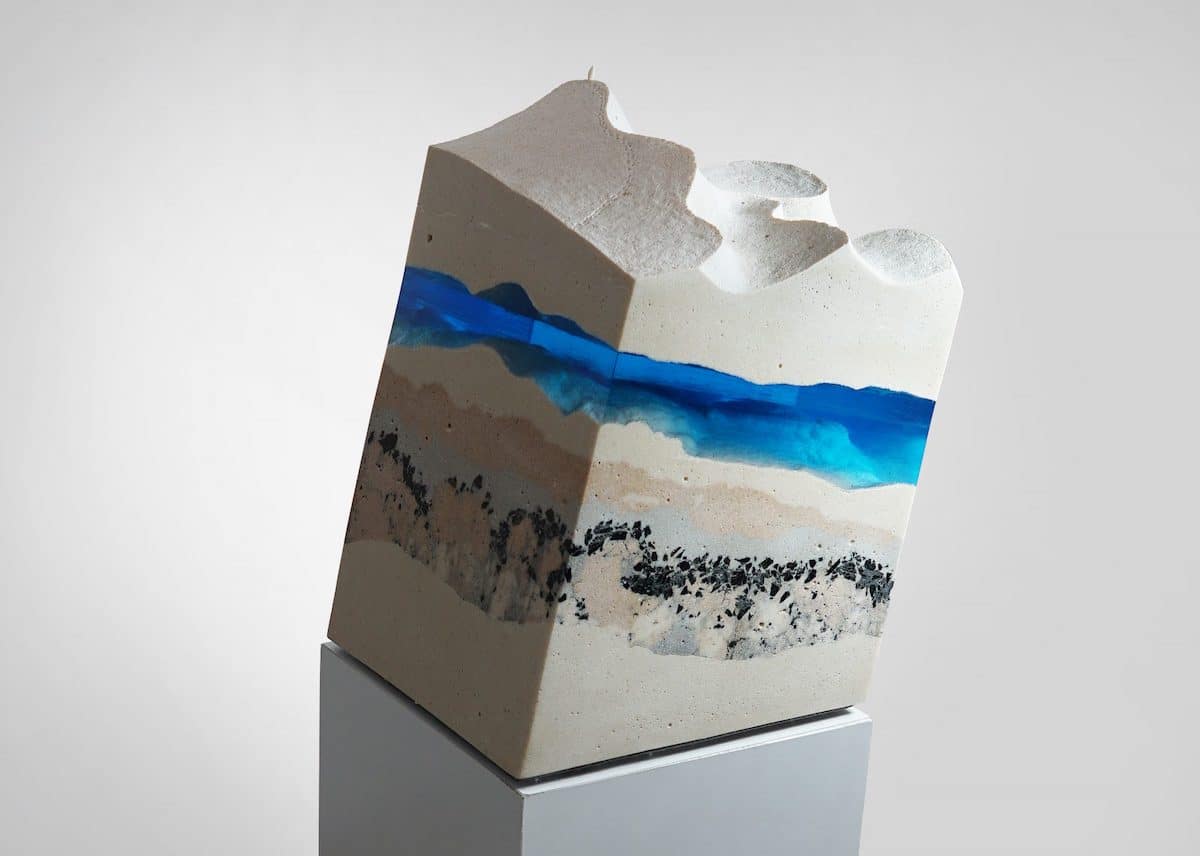
Dunes: Piece of Desert
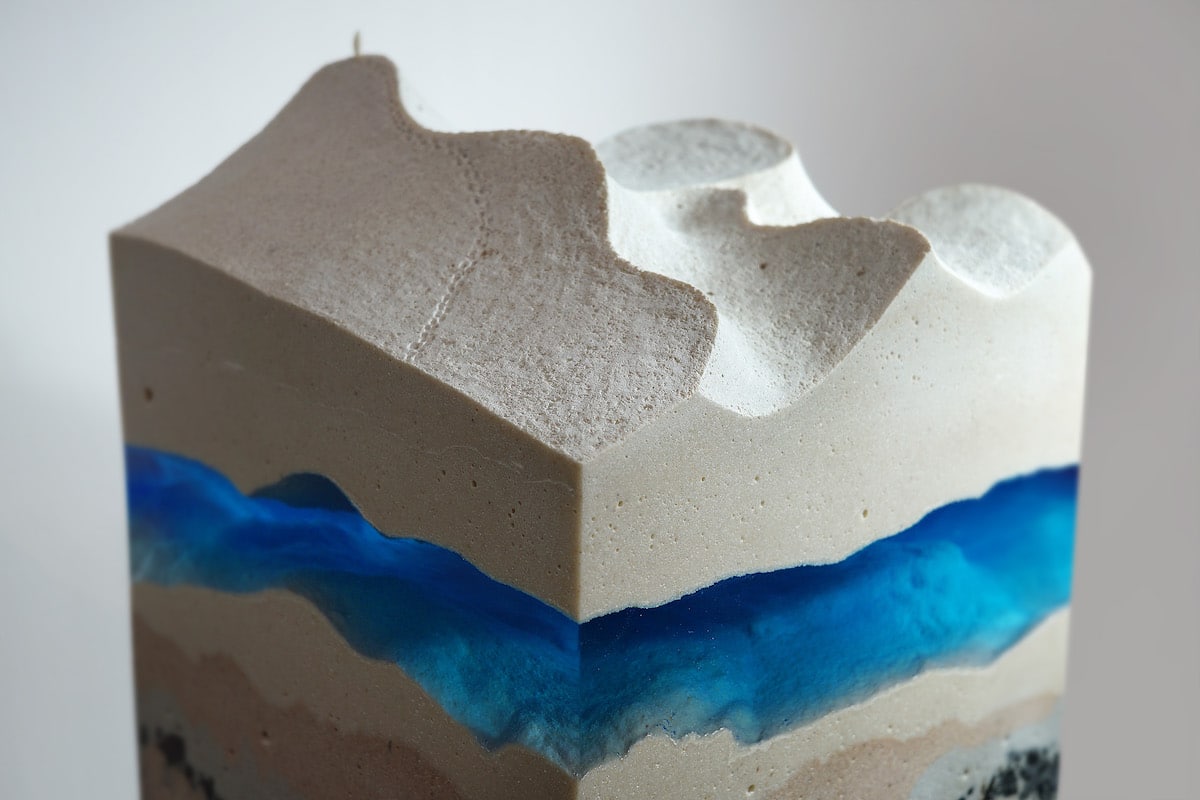
Dunes: Piece of Desert
You've branched out some, landscape-wise, with Dunes: Piece of Desert. Do you plan on going beyond that and experimenting with other terrains?
The possibilities are limitless; I gave myself no restraints for form/theme/material. Therefore, I am quite excited to see where the future will take me, creatively. Dunes is an interesting variation that I have experimented with, it is just the small tip of the iceberg. For me, 2019 will be the year of EPIC new works, out of this world—really, stay tuned.
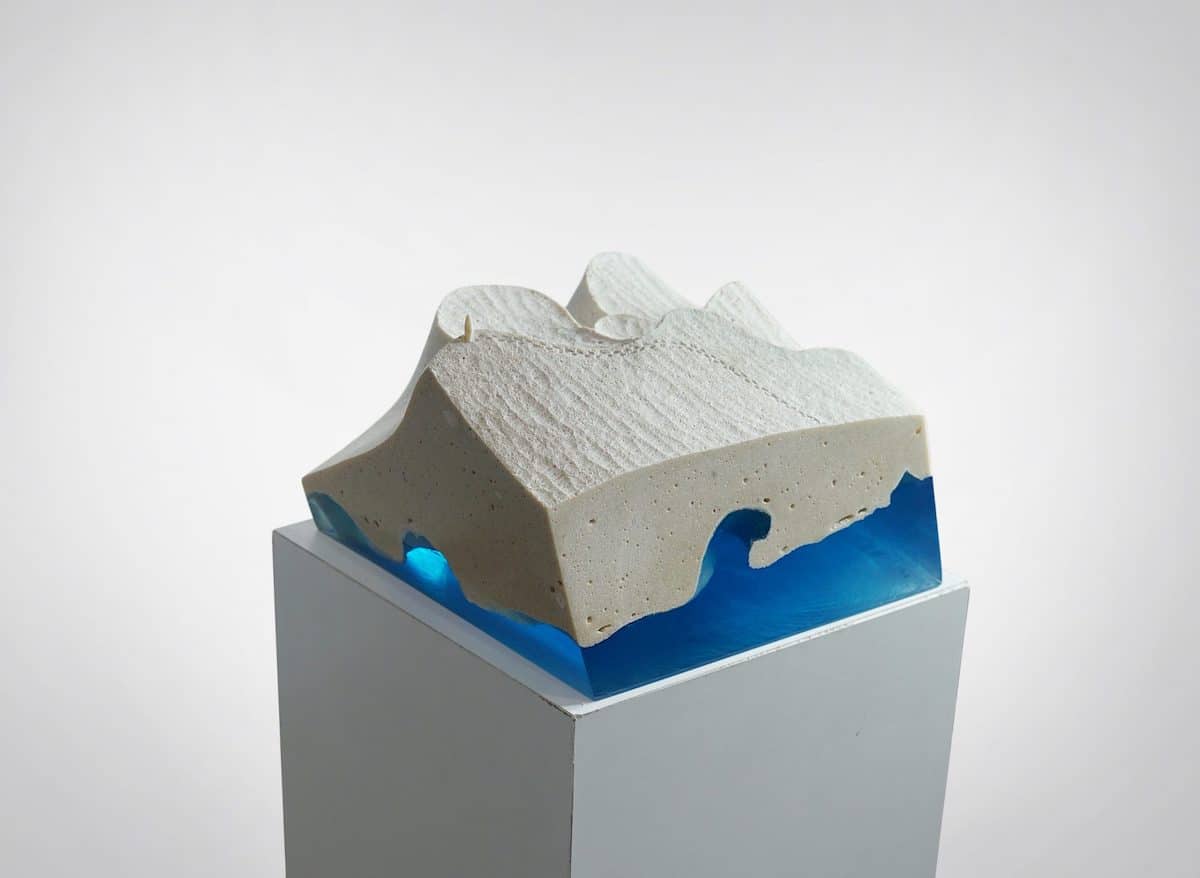
Dunes: Lost in Desert












































































